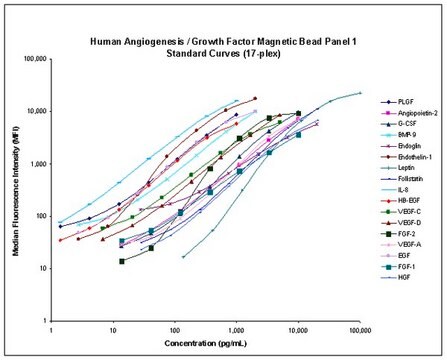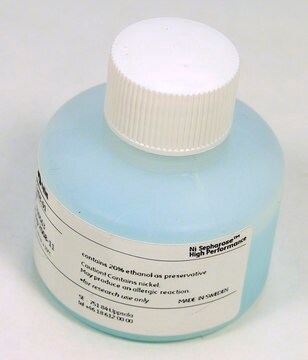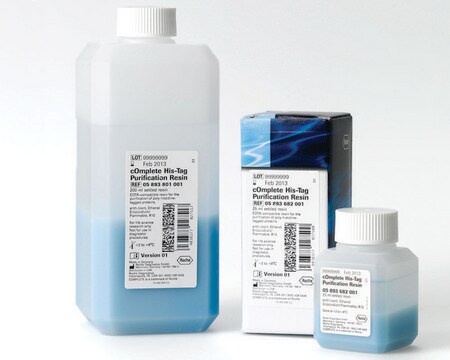HMMP1MAG-55K
MILLIPLEX® Human MMP Magnetic Bead Panel 1 - Immunology Multiplex Assay
Matrix Metalloproteinase Bead-Based Multiplex Assays using the Luminex technology enable the simultaneous analysis of multiple MMPs biomarkers in human serum, plasma and cell culture samples.
Synonym(s):
Human matrix metalloproteinase multiplex kit, Luminex® Human MMP immunoassay, Millipore human MMP panel
About This Item
Recommended Products
Quality Level
species reactivity
human
manufacturer/tradename
Milliplex®
assay range
standard curve range: 146-150,000 pg/mL
(MMP-3)
standard curve range: 58-60,000 pg/mL
(MMP-13)
standard curve range: 98-100,000 pg/mL
(MMP-12)
technique(s)
multiplexing: suitable
detection method
fluorometric (Luminex xMAP)
shipped in
wet ice
General description
MILLIPLEX® Human MMP Bead Panel 1 is a 3 plex kit to be used for the simultaneous quantification of any or all the following analytes in serum/plasma samples: MMP-3, MMP-12, and MMP-13.
The Luminex® xMAP® platform uses a magnetic bead immunoassay format for ideal speed and sensitivity to quantitate multiple analytes simultaneously, dramatically improving productivity while conserving valuable sample volume.
Panel Type: Cytokines/Chemokines
Specificity
Application
- Analytes: MMP-3, MMP-12, MMP-13
- Recommended Sample type: Serum and plasma; this panel has also been analytically verified in urine, tissue/cell lystate and culture supernatant samples
- Recommended Sample dilution: Neat
- Assay Run Time: One day
- Research Category: Inflammation & Immunology
Features and Benefits
Storage and Stability
Other Notes
Legal Information
Disclaimer
Signal Word
Danger
Hazard Statements
Precautionary Statements
Hazard Classifications
Acute Tox. 4 Dermal - Acute Tox. 4 Inhalation - Acute Tox. 4 Oral - Aquatic Chronic 2 - Eye Dam. 1 - Skin Sens. 1 - STOT RE 2
Target Organs
Respiratory Tract
Storage Class Code
10 - Combustible liquids
Certificates of Analysis (COA)
Search for Certificates of Analysis (COA) by entering the products Lot/Batch Number. Lot and Batch Numbers can be found on a product’s label following the words ‘Lot’ or ‘Batch’.
Already Own This Product?
Find documentation for the products that you have recently purchased in the Document Library.
Related Content
Learn how immunoassays are used in cosmetics and personal care research to discover potential harmful effects of cosmetics products, and assess markers of inflammation, sensitization, aging, and tissue regeneration among others.
Our team of scientists has experience in all areas of research including Life Science, Material Science, Chemical Synthesis, Chromatography, Analytical and many others.
Contact Technical Service











